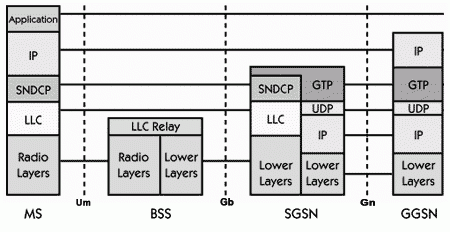GPRS stands for General Packet Radio System. GPRS provides packet radio access for mobile Global System for Mobile Communications (GSM) and time-division multiple access (TDMA) users.
GPRS is important as a migration step toward third-generation (3G) networks and allows network operators to implement an IP-based core architecture for data applications, which will continue to be used and expanded for 3G services for integrated voice and data applications.
GPRS is a new bearer service for GSM that greatly improves and simplifies wireless access to packet data networks, e.g., to the Internet. It applies a packet radio principle to transfer user data packets in an efficient way between GSM mobile stations and external packet data networks. Packets can be directly routed from the GPRS mobile stations to packet switched networks.
The following three key features describe wireless packet data:
The always online feature: Removes the dial-up process, making applications only one click away.
An upgrade to existing systems: Operators do not have to replace their equipment; rather, GPRS is added on top of the existing infrastructure.
An integral part of future 3G systems: GPRS is the packet data core network for 3G systems EDGE and WCDMA.
Following diagram shows the GPRS protocol stack and end-to-end message flows from the MS to the GGSN. The protocol between the SGSN and GGSN using the Gn interface is GTP. This is a Layer 3 tunneling protocol

One of the most important things to note here is that the application communicates via standard IP, which is carried through the GPRS network and out through the gateway GPRS looks like a normal IP sub-network to users both inside and outside the network.
Also notice that packets travelling between the GGSN and the SGSN use the GPRS tunnelling protocol, so the internal backbone network does not have to deal with IP addresses outside the GPRS network. This GTP is run over UDP and IP.
Between the SGSN and the MS a combination of SubNetwork Dependent Convergence Protocol and Logical Link Control is used. SNDCP compresses data to minimize the load on the radio channel. The LLC provides a safe logical link by encrypting packets. The same LLC link is used as long as a mobile is under a single SGSN.
When the mobile moves to a routing area that lies under a different SGSN, the LLC link is removed and a new link is established with the new Serving GSN X.25. Services are provided by running X.25 on top of TCP/IP in the internal backbone.
